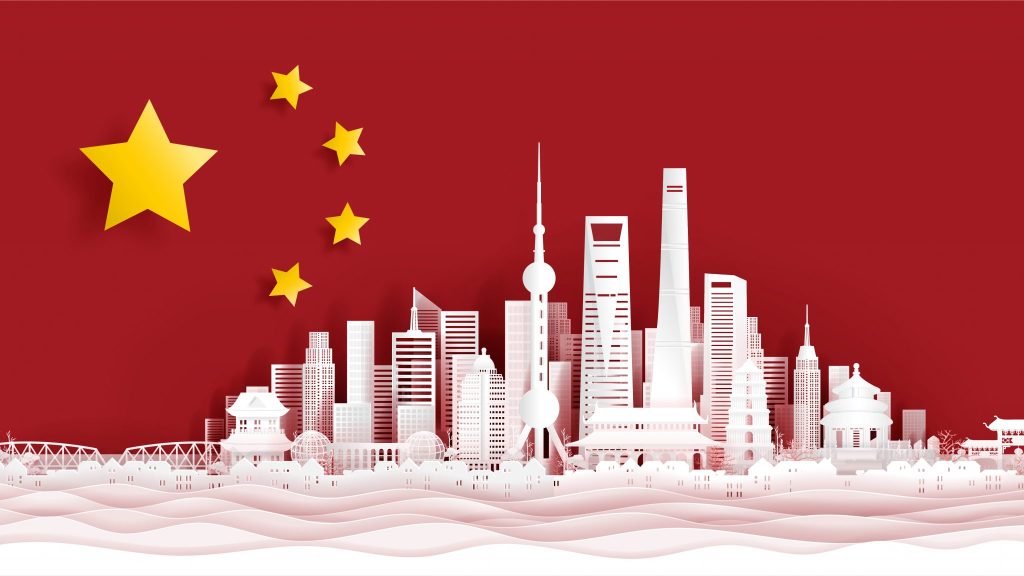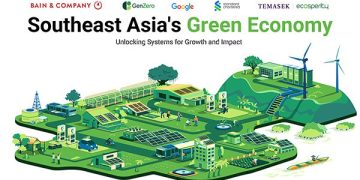Over the past few years, China’s economy has faced significant challenges, including the impacts of the COVID-19 pandemic, global supply chain disruptions, and domestic economic reforms. Despite these hurdles, the country has made a remarkable recovery, with growth rates picking up and economic activity gradually returning to pre-pandemic levels. However, many are asking: Can China’s economic recovery be sustained? What does the future hold for one of the world’s largest economies?
In this article, we’ll explore the factors contributing to China’s economic recovery, the potential risks to that recovery, and how experts predict the future trajectory of the country’s economy. Understanding these dynamics is crucial for investors, policymakers, and global businesses alike, as China’s economic performance has wide-reaching implications for both the domestic and global markets.
1. China’s Economic Recovery: Key Drivers
Post-Pandemic Resurgence
China’s economic recovery began in earnest after the government lifted the strict lockdowns and COVID-19 restrictions that had dampened economic activity in 2020 and 2021. The country’s handling of the pandemic through mass testing, quarantine measures, and rapid vaccination campaigns allowed for a quicker reopening compared to other major economies. This jump-started consumer spending, industrial output, and exports.
China’s GDP growth in 2023 has been a reflection of this post-pandemic bounce-back. With large-scale infrastructure projects, increased domestic demand, and revitalized consumer sectors, the recovery has been impressive, but the question remains whether these growth drivers can be maintained in the long term.
Government Stimulus and Investment
The Chinese government has been proactive in supporting economic recovery through fiscal stimulus programs. This includes a combination of tax cuts, infrastructure spending, and loans to businesses, especially small and medium-sized enterprises (SMEs) that were hit hard by the pandemic. Additionally, China has ramped up investments in technology, renewable energy, and the digital economy, which are expected to drive long-term growth.
However, the reliance on government stimulus, while effective in the short term, raises concerns about the sustainability of the recovery. With increasing debt levels and questions about the effectiveness of stimulus in the face of rising inflation, some are wary of the risks posed by further government intervention.
Global Trade and Exports
China’s role as the world’s factory and its dominant position in global trade have been critical to its recovery. Despite global supply chain disruptions, China’s manufacturing sector has managed to rebound strongly, driven by high global demand for electronics, medical supplies, and consumer goods. This has allowed China to maintain robust export growth, which has been a key pillar of the economy.
Yet, the global economic environment is becoming more complex, with geopolitical tensions, trade disputes, and shifting global supply chains. Trade tensions between the U.S. and China, particularly related to technology and tariffs, remain an ongoing concern that could affect China’s export-driven growth in the future.
2. Challenges and Risks to Sustaining the Recovery
Demographic Challenges
One of the most pressing long-term challenges for China is its demographic situation. The country is facing an aging population, which is projected to result in a shrinking labor force in the coming decades. As the working-age population decreases, the pressure on the country’s social welfare system, healthcare, and pensions will increase.
Moreover, China’s historically high savings rates, combined with slower population growth, have led to a reduced consumer base and declining demand in certain sectors, particularly those dependent on the younger population. The government has acknowledged this challenge and is attempting to address it through pro-family policies, such as increasing support for child-rearing, but it remains to be seen how effective these measures will be.
Debt and Real Estate Risks
China’s rapid economic growth over the past few decades has been fueled in part by an enormous accumulation of debt, both at the government and corporate levels. The real estate sector, in particular, has been a major driver of this debt. Major property developers like Evergrande have faced liquidity crises, resulting in defaults and a slowdown in housing construction.
A slowdown in the real estate sector has broader implications for the economy, as it affects consumer confidence, investment, and local government revenues, all of which are closely tied to property values. Despite government efforts to stabilize the sector, the long-term sustainability of the real estate market remains uncertain. If the debt situation in the property sector is not addressed, it could become a major drag on the broader economy.
Environmental and Regulatory Pressures
China’s rapid industrialization over the past few decades has come at a significant environmental cost, and the government is under increasing pressure to address pollution, climate change, and resource management. While China has committed to reaching carbon neutrality by 2060 and has made strides in renewable energy development, transitioning to a greener economy could pose challenges for the industrial sectors that have powered the nation’s growth.
Additionally, China’s regulatory environment has become more stringent in recent years, with the government cracking down on tech companies, tightening financial regulations, and pursuing anti-monopoly measures. While these actions aim to promote long-term stability and sustainable growth, they have led to uncertainty and volatility, particularly in the tech sector.

3. Key Economic Trends to Watch in the Coming Years
The Shift Toward Domestic Consumption
As China’s export-driven growth model faces increasing global challenges, the country is pivoting toward boosting domestic consumption. The government has introduced measures to encourage consumer spending, such as tax breaks, subsidies for electric vehicles, and investments in rural areas. However, the success of this shift will depend on consumers’ confidence, income growth, and the ability to address the rising cost of living.
China’s middle class has been expanding rapidly, and this demographic shift offers significant potential for domestic consumption to become a key driver of future growth. However, it remains to be seen whether the shift will be sufficient to offset declines in exports and external demand.
Innovation and the Tech Sector
China has set ambitious goals to become a global leader in high-tech industries such as artificial intelligence (AI), 5G, and biotechnology. While the country has made impressive strides in these areas, technological competition from other nations, especially the U.S., could pose challenges.
The government’s push for self-sufficiency in critical technologies, such as semiconductors, reflects China’s efforts to reduce its reliance on foreign tech. The development of homegrown technologies, combined with continued investment in R&D, could provide China with a long-term growth engine, but geopolitical tensions could hinder access to key markets and technologies.
Greater Integration with the Global Economy
While China has traditionally been seen as somewhat isolated in terms of its political and economic policies, the country has been moving toward greater integration with the global economy. Initiatives like the Belt and Road Initiative (BRI) and increasing trade partnerships with emerging markets show China’s commitment to expanding its influence in global trade.
At the same time, the country must navigate an increasingly protectionist global environment, with countries like the U.S. pursuing more aggressive policies to limit China’s economic and technological rise. How China balances its domestic economic goals with the realities of a more fragmented global market will be crucial for its long-term economic stability.
4. Conclusion: Will China’s Economic Recovery Be Sustainable?
China’s economic recovery has been impressive, but several challenges could undermine its ability to maintain consistent growth in the long term. Demographic shifts, debt risks, and environmental concerns are major hurdles that the country will need to address. At the same time, the government’s focus on innovation, domestic consumption, and technological development provides a pathway for sustainable growth.
The future trajectory of China’s economy will depend on how effectively the government can manage these challenges while fostering an environment that supports innovation and consumption. While China’s recovery is on track for now, the key question remains: Can these efforts lead to sustained, balanced growth, or will the economy face periodic setbacks that could disrupt progress?
For investors and policymakers alike, the key will be staying informed about China’s evolving economic landscape and adjusting strategies to respond to both opportunities and risks as they emerge. The road ahead for China is not without its challenges, but its ability to adapt and innovate will determine whether its economic recovery can be sustained in the years to come.



































